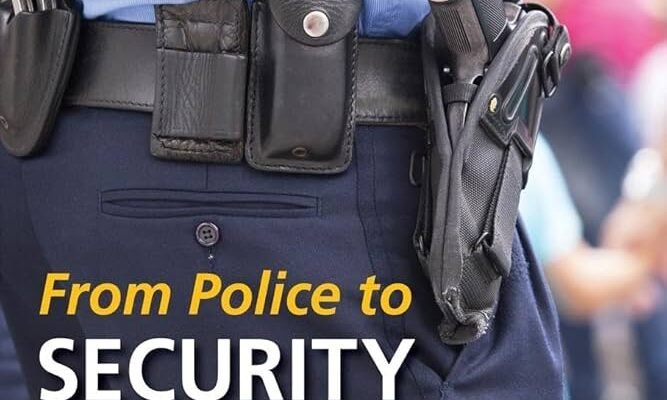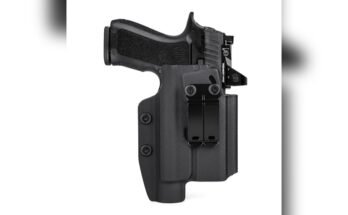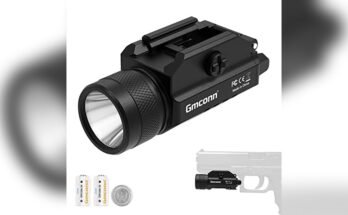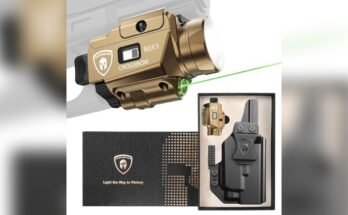I’ve spent years fitting, testing, and training with police holsters on the range and in the field. I know what works when you step out of the car at 2 a.m. and what fails when things get messy. Here’s the short answer to What holster do law enforcement officers use?: Most U.S. law enforcement officers use Level II or Level III duty holsters from brands like Safariland, often with ALS or SLS retention, set up for weapon lights and optics. Now let’s break down what that means, why it matters, and how to choose the right setup for real-world use.

Source: www.herospride.com
What Makes A Duty Holster Different
A duty holster is built for open carry on a uniformed belt. It must keep the gun secure, fast to draw, and safe from a grab. It has strong materials, a fixed angle, and tested retention. It is not the same as a concealed carry holster. It must stand up to rain, fights, and hard daily wear.
Key traits that set duty holsters apart:
- Active retention features that hold the gun in place under stress
- Rigid body that keeps the mouth open for safe reholstering
- Strong belt attachments for a stable draw and reduced flop
- Coverage for the slide and rear sight to protect the gun
- Options for weapon lights, red-dot sights, and suppressor-height sights

Source: inside.safariland.com
Common Holster Types Used By Police
Most departments issue a duty holster for uniformed patrol. Detectives and off-duty cops use concealment holsters. Specialized teams may use different mounts.
Main types you will see:
- Duty belt holster: Worn mid-ride on a Sam Browne or external duty belt
- Mid-ride with drop offset: Lowers the gun a bit for a straighter wrist and faster draw
- Thigh/drop-leg holster: Rare for patrol; used for SWAT or gear-heavy setups
- Plainclothes OWB: Slim, rides close to the body under a jacket
- IWB/AIWB for off-duty: Inside-the-waistband, often with a foam wedge and a claw
- Taser and less-lethal holsters: Purpose-built with different retention and color
From the street, I’ve seen mid-ride duty holsters work best for most officers. The grip clears body armor and winter coats. It is fast and reduces strain.
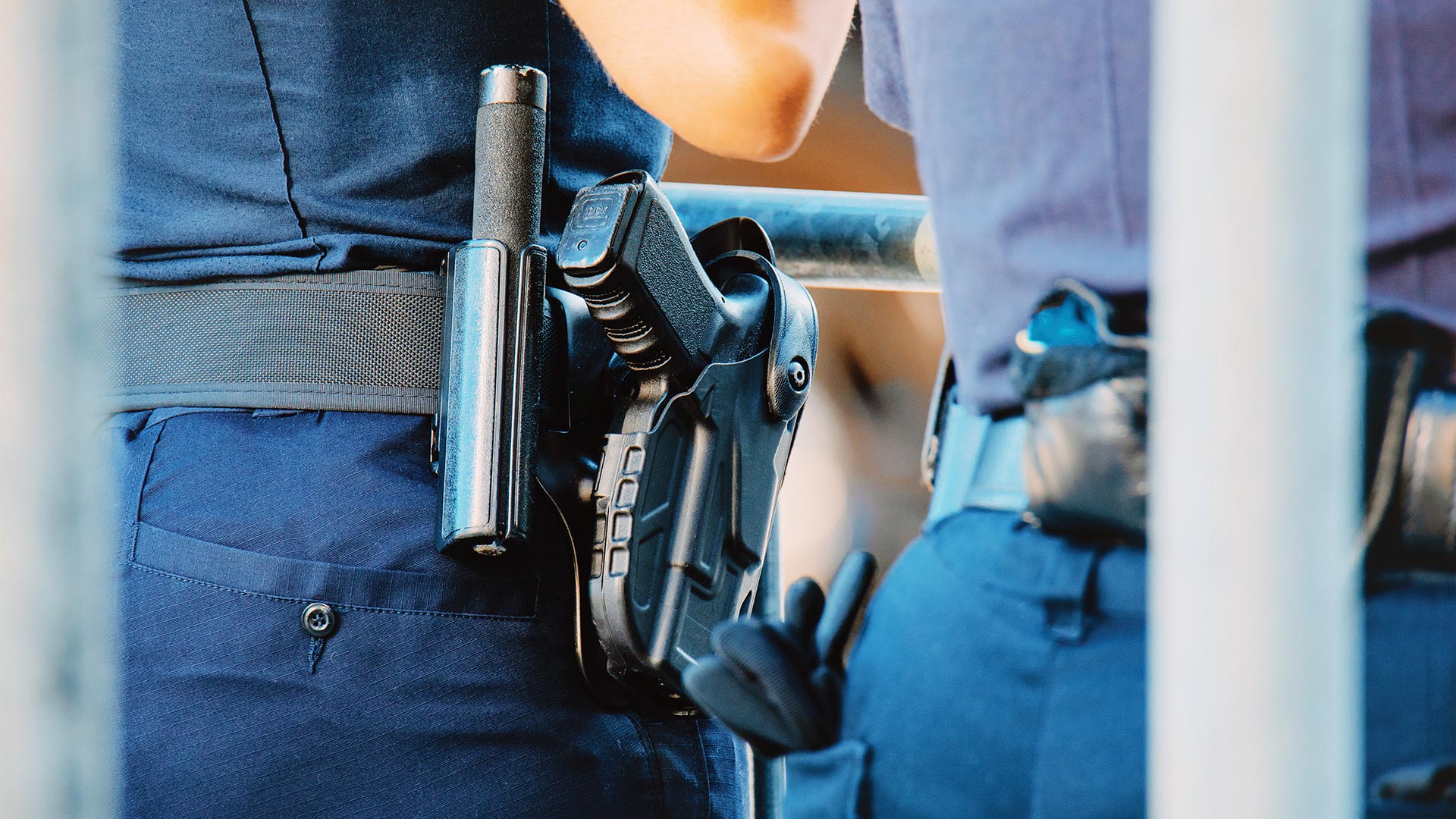
Source: apbweb.com
Retention Levels Explained
Retention levels show how hard it is to remove the gun without following the release steps. The goal is to stop gun grabs, yet keep the draw smooth.
What the levels generally mean:
- Level I: Passive friction only. Not for duty use.
- Level II: One active lock, often with a hood or lever. Common for experienced officers.
- Level III: Two active locks, like a rotating hood plus an internal lock. Very common for patrol.
- Level IV: Three or more locks. Rare, but used by some units and policies.
The Safariland ALS is an internal lock that grabs the ejection port. The SLS is a rotating hood. Many departments issue ALS/SLS combo holsters (Level III). With training, they draw fast and feel natural. I’ve seen officers cut draw times under one second with proper reps.
Popular Brands And Models In Service
Most U.S. agencies lean on proven names. Procurement teams test for retention, draw speed, compatibility, and durability.
Common choices you will hear about:
- Safariland ALS and ALS/SLS: The 6360, 6390, and 7360 series are duty staples
- Optic-ready versions: RDS-capable models with taller sight channels and shrouds
- Light-bearing models: Fit popular lights like the Streamlight TLR-1 and SureFire X300
- Basketweave and plain finishes: To match uniform policies
- Other brands: Some agencies tried Blackhawk duty holsters, but many moved to ALS for safety and consistency
From my field notes, Safariland’s SafariLaminate and 7TS lines hold up well to heat, sweat, and day-long wear. The ALS lock works even with gloves, mud, and rain. That is a big win on night shifts.
Fit, Lights, Optics, And Mounting Options
Modern patrol guns often run a weapon light and a red-dot sight. The holster must fit both. Get the exact gun-light combo model. If you switch lights later, you may need a new holster.
What to match and why it matters:
- Gun model: Frame and slide length must match
- Weapon light: Body shape and bezel size drive fit
- Red-dot sight: RDS-cut holsters protect the optic and keep the draw clean
- Suppressor-height sights: Need a taller sight channel
- Muzzle devices: Compensators often need open-bottom holsters
Mounting that works on the street:
- Mid-ride UBL fork: A sweet spot for draw speed and armor clearance
- QLS fork/receiver: Fast swap between holsters and belts
- Slight cant: Helps clear vests and reduces wrist angle
- Leg strap add-on: Controls holster flop without going full drop-leg
Training, Safety, And Policy
Gear is only half the story. Skill and policy make the rest. Agencies test holsters to ensure they resist grabs. They run retention drills and force-on-force. They track negligent holstering events and update training.
Best practices I teach officers:
- Learn the lock path until it is muscle memory
- Practice from full retention and with gloves
- Reholster slowly with your eyes on the holster mouth
- Keep the support hand clear of the muzzle
- Train seated draws from patrol cars and tight spaces
- Follow policy on retention level and duty light requirements
One note on risk: Some index-finger-release designs raised safety concerns in the past because they can lead to a trigger press on the draw. Many agencies moved to thumb-driven systems like ALS to reduce that risk.
Off-Duty And Plainclothes Carry
When the badge is under a shirt, the priorities shift to concealment, comfort, and a safe reholster. Retention is lower but still matters.
Good options that work in real life:
- AIWB with a foam wedge and wing: Great concealment and fast draw
- IWB at 3–4 o’clock: Comfortable for longer wear
- OWB under a jacket: Stable and easy to reholster
- Trigger guard fully covered: Non-negotiable
- Dedicated mag pouch: Keep reloads out of pockets with keys
I’ve worn AIWB for long days. A wedge makes a huge comfort difference. A stiff belt and proper ride height stop hot spots and printing.
Buying Tips And Mistakes To Avoid
Choose like an agency armorer would. Match your mission, not your wish list.
Follow these tips:
- Pick the retention level your policy demands
- Buy the exact model for your gun, light, and optic
- Use a mid-ride belt mount for most patrol work
- Add QLS for easy swaps between rigs
- Test draws with gloves, jackets, and body armor
- Do 10 minutes of dry practice daily for two weeks when switching holsters
Common mistakes I’ve seen:
- Buying a holster for the wrong light model
- Over-tightening leg straps, causing numbness
- Skipping RDS-ready versions when running a dot
- Ignoring belt stiffness and mount height
- Neglecting practice on reholstering under stress
Frequently Asked Questions Of What Holster Do Law Enforcement Officers Use?
What Retention Level Do Most Officers Use?
Many patrol officers use Level III holsters for extra grab resistance. Some experienced units run Level II for speed. Policy drives the choice.
Which Holster Brand Is Most Common In U.S. Policing?
Safariland is the most common for duty use. Their ALS and ALS/SLS models are standard in many large agencies.
Do Duty Holsters Work With Red-Dot Sights?
Yes. Look for RDS-capable models. They have a hood or shroud that protects the optic and allow a clean draw.
Should I Get A Light-Bearing Holster?
If you run a weapon light on duty, yes. Get a holster made for your exact light. A mismatch can cause drag or lock failures.
Is A Drop-Leg Holster Good For Patrol?
Not usually. A mid-ride holster with a single leg strap is more stable and faster to draw. Full drop-leg works best for specialized roles.
How Do I Make My Draw Faster With A Level III Holster?
Practice the exact unlock sequence. Start slow. Build smooth motion. Then add speed. Train with gloves and duty jackets.
Conclusion
Police use rugged duty holsters with real retention, most often Level III ALS/SLS models that fit lights and optics. The right setup balances speed, safety, and control. Pick gear that matches your role. Then train until the draw is second nature. If you do that, your holster becomes a quiet partner you can trust every shift.
Ready to go deeper? Try a few models side by side, run dry drills for two weeks, and log your times. Share your results or questions in the comments, and subscribe for more gear guides and training tips.
Watch This Video on What holster do law enforcement officers use?
